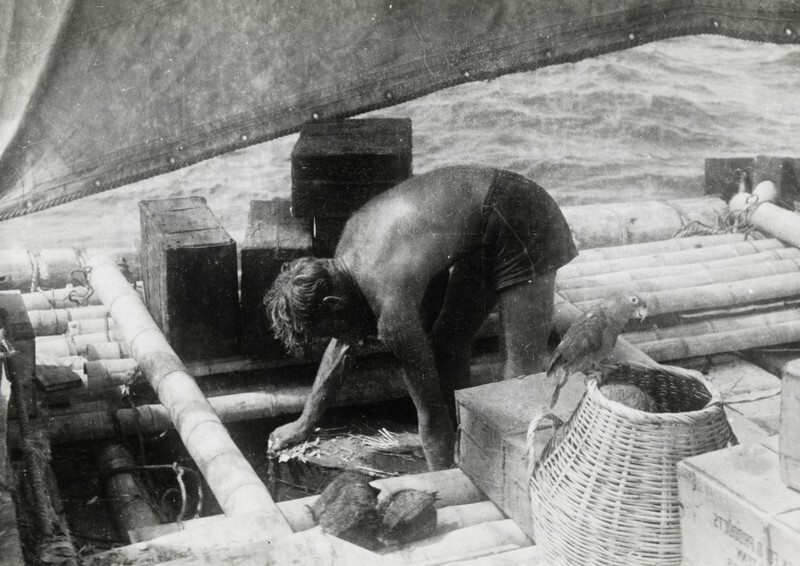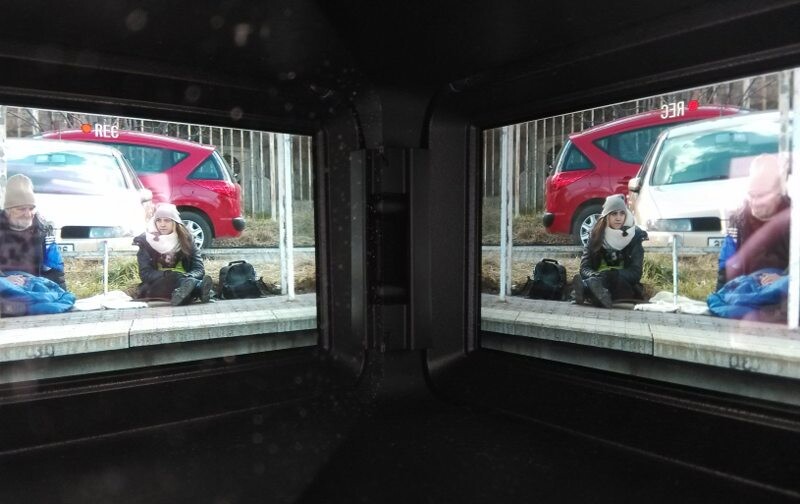Kon-Tiki and the Postwar War Meeting with Film Realism
In the beginning there was trembling, often unfocused, offset amateur camera footage, in the end it received an Oscar for best documentary film. When watching the piece Kon-Tiki, capturing the adventurous journey of Norwegian seaman and adventurer Thor Heyerdahl and his crew from Peru to Polynesia, it is quite obvious why the famous critic and great promoter of film realism Andre Bazin. "Kon-Tiki is one of the most beautiful films, while not being a film at all," wrote the French critic in his essay Cinema and Exploration. And he was right.
Unlike the other typical Norwegian "subgenre" of travel documentaries depicting polar expeditions (especially popular in the 20's), the primary goal of the filmmakers adventurers was not to shoot material out of which a documentary would be created. Heyerdahl and his crew voyaged across thousands of kilometres between the port of Callao and the Polynesian atoll Raroia in a replica of the Inca raft made out of balsa wood and using ancient technological processes. The travellers recorded this impressive odyssey without thoughts focusing primarily on film composition and the effect on the viewer.
With the success of the expedition, which set out to confirm the theory that even among our ancient ancestors cross-cultural contact could have been made, only after millions of books sold, a vision of creating a film crystalized. The first Norwegian production attempt failed and the piece was eventually created with help from Swedish producer Olle Nordemer who actually saw potential in the imperfections of the material. Unlike the previous producer, Ralph Staub, he dismissed attempts to dramatize some of the dangerous events, which were not caught on film for obvious reasons. He had a voiceover made and filmed an introduction, inspired mainly by American war reporting formats, which brought a lot of innovations and a large serving of realism to the documentary genre.
Instead of the popular exotic images of the 20s and 30s from the tropics, hungry for sensation and spectacles, such as L'Afrique vous parle - in which a black man is eaten by a crocodile - Kon-Tiki comes with completely different types of shots. The authenticity of the amateur recording is reinforced by the fact that it was recorded with the same speed as silent film, 16 frames per second and because of its conversion to sound speed (24 frames per second) every second frame had to be duplicated. In the end "the result is jumpier than a projection at a village cinema in the year 1910," said Bazin. Similarly to authentic war footage, it was this "quality" that conveys the feeling that we are sitting next to the adventurers on the raft boards, made without a single nail. Some viewers reportedly got seasick because of the shots. Whether it's true or it's a myth similar to the one about members of an audience dodging a passing train in one of the first recordings in history, Kon-Tiki is early evidence that extraordinary persuasiveness and appeal does not have to be the result of expensive productions and sophisticated filming.
Filming is an integral part of the adventure. While watching blurred, close-up shots – as there was no room on a raft to shoot at a distance- of thrashing fins of just caught sharks, all theories about the nature of film media or the creative film process disappear. What matters most is that all dramatic events become indistinguishable - like giant whales - or were not recorded. It just enhances the bond with the protagonists who were too busy fighting for their lives, rather than holding the camera in their hands. The whale is almost invisible, but the danger is too tangibly real.
Nowadays, it is perhaps laughable, trembling amateur footage floods social networks and there is no doubt about its attractiveness. Heyerdahl, however, belongs to the pioneers, not only in terms of exploring paths not yet travelled, but (somewhat innocently) also in the sense of exploring the unfamiliar corners of the viewers' habits. Kon-Tiki breaks the boundary between science and art, and still leaves us with questions regarding authorship, one of the most continuing themes of aesthetics and art theory. Which creator is more responsible for the success, an amateur cameraman without any intention of making a commercially distributed film or a producer who delivers it to the cinema in its final form? Kon-Tiki ultimately is evidence that a film is foremost a collective work and in this it sets itself apart from other art forms. Pictures speak for themselves.



